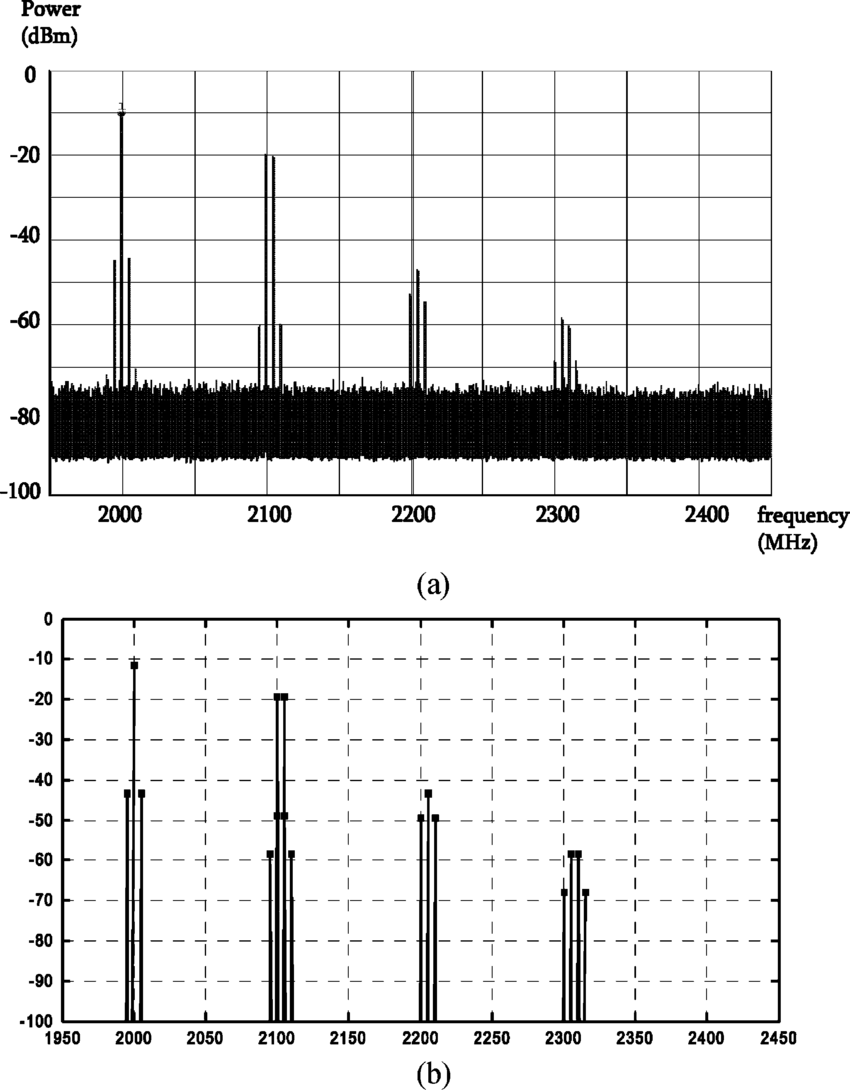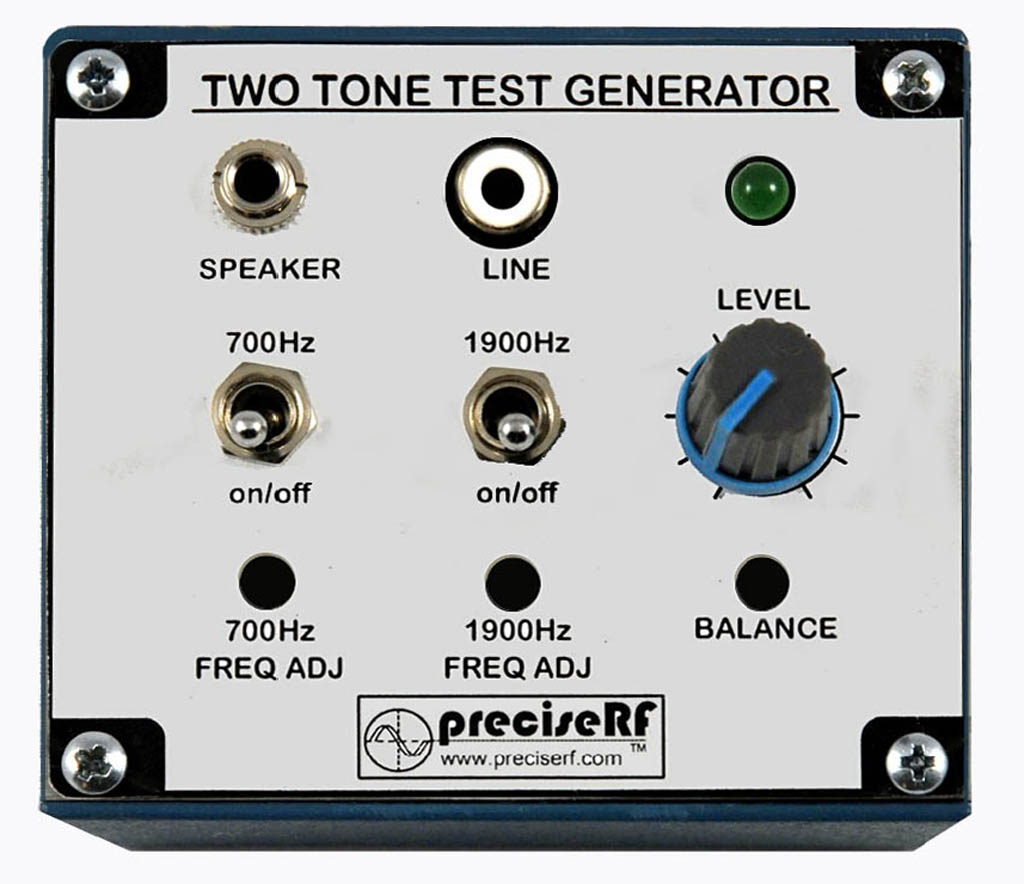Two tone test measurement results depicting signal and IMD powers and... Download Scientific
Building a simple 2 tone audio generator for testing SSB radios. YouTube

1. Center frequency protocol 2. Tone frequency protocol Appendix A: IMD Optimization tables for the PNA-X Appendix B: The amplifier I want to test has an IP3 of +38 dBm. Can the PNA-X make this measurement? Appendix C: Quick checklist for two-tone CW IMD measurements using a PNA-X with dual internal sources Overview
15. Measured filter performance for a twotone test with fundamental... Download Scientific

1. Select calculation, IP3 or IM3 products 2. Enter the levels and frequencies if required, then press the Calculate button to compute the third order intercept point (IP3), or the IM3 products. The yellow boxes indicate results and are read only. Note! The two tones (and IM3 products) do not have to be equal.
7 Two tone test showing intermodulation products. Download Scientific Diagram

Performing Two-Tone Analysis Using Circuit Envelope Simulation. This example takes advantage of the properties of real signals--namely, the sum-product equivalence of sinusoids. To perform the same experiment on a different RF system: Choose f1 and f2, the frequencies of the test tones. Use a Simulink Sine source and an Inport block to model.
A schematic of the twotone test experimental setup. Fundamental and... Download Scientific

The Two Tone, third-order intermodulation distortion (IM) test measures the degree of nonlinearity of an electronic device with a definable dynamic range, such as an amplifier. Nonlinear RF Amplifiers may spread signals into adjacent channels, and or frequencies, which can cause Cross Modulation.
Measured magnitude spectrum for twotone test of a MiniCircuits... Download Scientific Diagram

A two-tone test for characterizing nonlinear dynamic effects of radio frequency amplifiers in different amplitude regions Mahmoud Alizadeh a b , Daniel Rönnow a Add to Mendeley https://doi.org/10.1016/j.measurement.2016.04.027 Get rights and content Under a Creative Commons license open access •
(a) Measured and (b) simulated twotone test of a mixer. Download Scientific Diagram

Measurement method of these intermodulation distortion (IMD) products at 2f1-f2 and 2f2-f1 is known as two tone test method. Refer Second VS Third Order Intercept point basics . Two tone test tools or equipments for IMD test Following test equipments are needed for the intermodulation distortion measurement setup. • RF Spectrum analyzer
The simulation of the dual‐band two‐tone test including second... Download Scientific Diagram

(1) For a two-tone input Vi (t) = A cos ( w1 t) + B cos ( w2 t) (2) Inserting Equation 2 into Equation 1 and using well-known trigonometric equalities In this study the sum term is ignored since the baseband filters of the device will reject it.
Linearity VS Non Linearity SSB Dual / Two Tone Test Splatter And Harmonics Are A Bad Thing

Figure 3, below. Two spectrally pure tones are applied to the system. The output signal power in a single tone (in dBm) as well as the relative amplitude of the third-order products (referenced to a single tone) is plotted as a function of input signal power. The fundamental is shown by the slope = 1 curve in the diagram. If the system non.
TwoTone Test Hacks

Performing two-tone measurement to test the robustness of telecommunications component design requires stimulating it with real-world, non-ideal signals. Learn how to stress test your design using a waveform generator providing a low-jitter, two-tone signal with added noise. Choose a country or area to see content specific to your location
9 Twotone test for the fifthorder intermodulation levels. Download Scientific Diagram

These signals can be represented by two tone testing which is suitable for showing the non-linear behavior of PA. The effects induced are intermodulation distortion (IMD), which is very dominant in third order. The effects of the IMD is even more significant than harmonic distortions of PA.
TTG1 Two Tone Generator PreciseRF

Two tone IMD is measured by applying two spectrally pure sinewaves to the ADC at frequencies f1 and f2, usually relatively close together. The amplitude of each tone is set slightly more than 6 dB below full-scale so that the ADC does not clip when the two tones add in-phase.
Two tone test measurement results depicting signal and IMD powers and... Download Scientific

The typical test of PIM is a two-tone test in which two large equal-amplitude sinusoids are applied to the device under test (DUT) and the level of the intermodulation signals measured. Except for the DUT generating the distortion being passive, distortion appears as described in Section 4.5. PIM is observed in a wide number of situations.
SSB TwoTone Test Generator EasyEDA open source hardware lab

NOTE: Two-tone testing is commonly used to test the performance of audio data that is embedded in modulated signals like AM or FM radio broadcasts. You can use two-tone signals to check the performance of RF receivers. The ARRL and other radio-centric organizations have lots of data on testing receivers, for those so inclined.
Figure B.3. Measurement setup used for twotone test. Download Scientific Diagram

0:00 / 4:18 #8: Two-tone test of SSB transmitter output w2aew 192K subscribers Subscribe 44K views 12 years ago Fun Oscilloscope Applications Two-tone tests are often used to test SSB.
Twotone intermodulation test result (inputs are at 800 kHz and 825 kHz). Download Scientific

Two-tone, third-order intermodulation distortion (IM) expresses the degree of non-linearity of an electronic device that has a definable dynamic range, such as an amplifier or mixer. This characteristic is dependent upon input levels, as well as operating frequencies and terminating impedance.
Measured IMD3 and PAE versus output power under a twotone test with... Download Scientific

Two-tone testing is a means of testing electronic components and systems, particularly radio systems, for intermodulation distortion. It consists of simultaneously injecting two sinusoidal signals of different frequencies (tones) into the component or system.